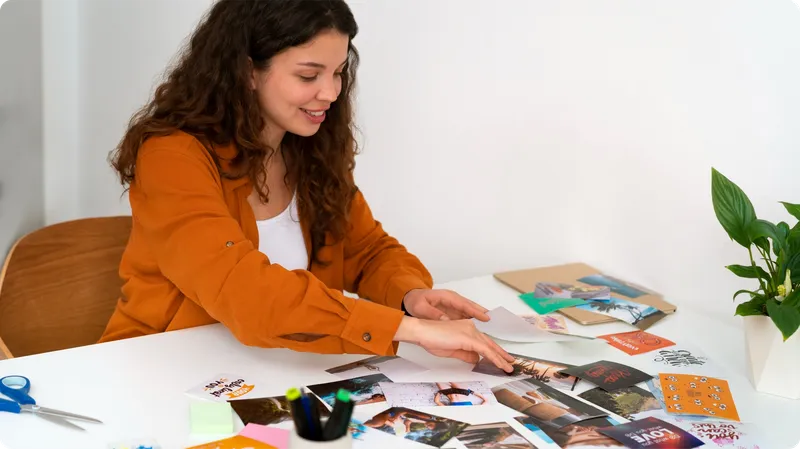
I’ve already written about user experience research and why we see it as the key to building successful digital products. Now, it’s time to dive deeper. The UX research toolbox can include many different methods. We’ve already described some of them on our blog, like ethnographic research and usability testing. This time, I will focus on individual in-depth interviews.
Individual in-depth interviews are also referred to as user interviews, IDI studies, or simply IDI. This common research method has been in use for years, not only in UX research but also in social sciences and marketing research.
In-depth interviews are a method of qualitative research (characterized by small research samples and answering "why?" and "how?" questions) with a focus on examining statements (i.e., what people say).
In practice, as the name suggests, individual in-depth interviews are 1-on-1 conversations between researchers and study subjects. However, what makes IDIs unique is their strong focus on specific topics, which the researcher sees as the most important. This is the main difference between IDIs and typical radio or TV interviews.
Identifying topics worth deep exploration is the same as defining the hypotheses and research objectives of a given project, which are then turned into research scenarios. A properly written scenario includes an inventory of questions and areas to be verified, as well as guidelines for how the session should be conducted.
Seeking answers to questions about user choices and decisions can be compared to a treasure hunt. Following this comparison, the research scenario is like a treasure map, which helps an adventurer cross a difficult maze while avoiding digressions irrelevant to the goals of the study.
Individual in-depth interviews can be conducted both offline and remotely. The choice of the interview format should always be based on the type and purpose of the project. In some cases, it is worth the extra effort and cost to meet respondents in person, e.g., at their place of work, to gain a better understanding of the context in which they operate and make decisions.
In some other cases, we may need to talk to a hard-to-reach research group, e.g., doctors, making online interviews a better choice, as they will allow us to find respondents more easily due to the greater flexibility of available dates.

When working on digital products, IDIs are particularly useful at the initial stages, especially in the Discovery phase and at the beginning of redesign work. That’s when we want to get to know users’ real problems and needs so that we’re able to think about solutions at later stages of the project.
Unlike quantitative research, which allows us to observe certain phenomena in numbers only, during an interview we have a chance to inquire, clarify, and deepen the most interesting areas of conversation.
This enables researchers to reach "hidden" conclusions that give us the chance to understand users’ context as well as their needs and points of view. Therefore, the conclusions drawn from IDI are of great help in creating user personas and customer journey maps, which then allow us to focus on the users' perspective during further work.
However, it’s worth remembering that in-depth interviews are a method that examines respondents' declarations. Therefore, if we want, for example, to check whether our new application is easy to use, instead of asking respondents about it during the interview, it will be better to conduct usability tests and draw conclusions based on how respondents perform tasks, not on their words.
Despite providing a friendly research atmosphere during the interview, we must also take into account that what we hear will not always be fully truthful. Some people avoid telling the truth on purpose, for example, when the conversation concerns an embarrassing topic or because of a natural desire to present themselves in a positive light. In addition, we are all human and everyone will sometimes forget or misremember things.

Individual in-depth interviews are a relatively simple but flexible research method that can be combined with other techniques and enriched with additional elements.
Let's imagine that we are developing a new app for ordering food online and want to learn about the needs of potential users. To tackle this challenge, we can conduct a series of traditional IDIs in which we talk to respondents and then draw conclusions about their needs around ordering food.

However, we can also approach the task in a less cookie-cutter way and enrich the IDI with additional elements as part of the research session:
The food app example is purely theoretical, of course, but it serves well to illustrate the eclectic approach to research that we hold dear here at Future Mind, and that allows us to come to more accurate conclusions. This is especially significant because if we compare the costs and time spent on a traditional individual in-depth interview study and on one enriched with other techniques, the differences are marginal since the costs of recruiting and paying respondents stay the same.

Another variation on IDI is the so-called dyad, i.e., an interview conducted with two respondents at the same time. In certain contexts, a dyad will work better because it will allow us to learn the perspective of both people involved in a process. For example, in an interview about household expenditures in the context of a budget planning application, it may be a good idea to talk to a married couple who manage their budget together.
I just described how IDI can be combined with other techniques in a single session. However, you may now be asking yourself: what challenges in your product work call for applying IDI? Here are a few sample questions that IDI will help you answer.
Possible conclusion: Most users decide not to use the app because they don't see any additional benefits relative to using the web version of the store.

Possible conclusion: The application does not support users in shopping for the whole family. In addition, customers expect the offering to be more personalized.
Possible conclusion: Younger users prefer to use competitor solutions due to other products’s eco-awareness.
Possible conclusion: Customers prefer to shop in a stationary store because they find it easier to choose the right size.
Individual in-depth interviews are one of the most versatile qualitative research methods. They’re very useful when you want to discover users’ perspectives and learn about their needs, making it most applicable in digital product work during the Discovery phase. They can also be combined with other research techniques in research sessions to enrich their conclusions. At Future Mind, we advocate this approach and frequently use IDIs to listen to and understand the users' perspectives.